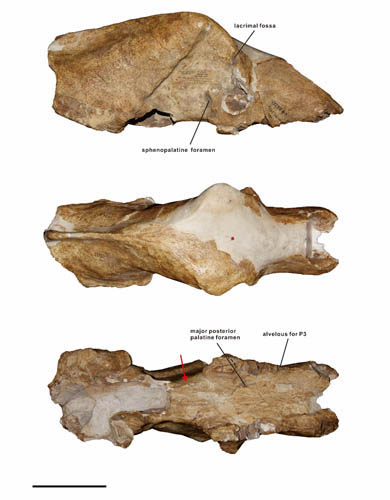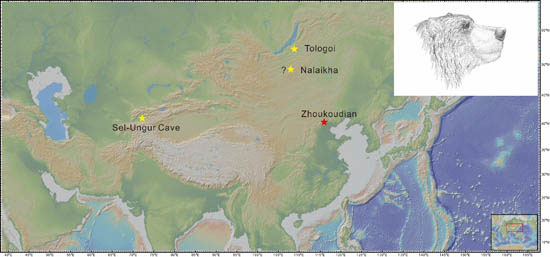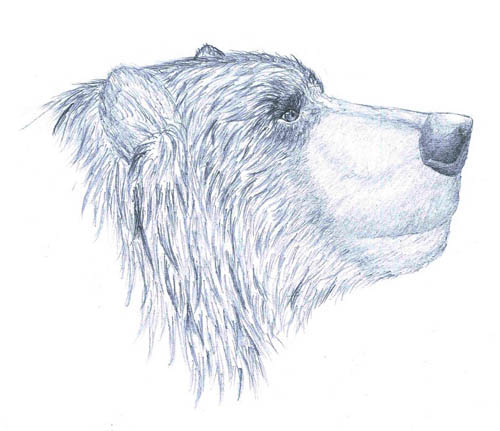The cave bear Ursus spelaeus (and its ancestor Ursus deningeri) is an iconic fossil species in Europe during the Quaternary Period and one of the earliest fossil species recognized by humans. The giant bears once roamed Europe and were known to live in caves. In the evolutionary history of more than 1 million years, cave bears and ancient humans fought countless wars for caves, which finally ended with the complete extinction of cave bears 17,000 years ago. Cave bears have lived in caves for generations, relying on hibernation to survive the long cold winter. The famous paleontologist Kurtén wrote the book "The Cave Bear Story: Life and Death of a Vanished Animal", which describes the cave bear's habits, population structure and other information in detail, making the cave bear a One of the best-known Quaternary animals.
Although cave bears were once very popular in Europe, there are very few records in Asia, and records in East Asia are even rarer and questionable. Kurtén once stated that cave bears should not exist in East Asia. Unlike Europe, where the cave bear is king, East Asia is ruled by the cave bear’s brother, the brown bear. A large number of brown bear fossils were found in the Zhoukoudian area, the site of the Peking Man, which seems to prove this point. However, in fact, when Mr. Pei Wenzhong first described the carnivore fossils in Zhoukoudian, he pointed out that some larger bears were somewhat close to European cave bears. Although they were not so typical, they could be classified as cave bears. But whether these fossils really belong to cave bears has never been discussed in more than 80 years, and whether cave bears were once distributed in East Asia has become an unresolved question.
Recently, doctoral student Jiang Zuo Qigao from the Institute of Vertebrate Paleontology and Paleoanthropology, Chinese Academy of Sciences, his supervisor, researcher Liu Jinyi, Ms. Chen Jin from the Herbarium and Dr. Jan Wanger from the Czech Academy of Sciences/Czech National Museum, as well as Dong Cuiping, Wei Jianhua and Ning from Zhoukoudian Museum In cooperation with Mr./Ms. Juan, they conducted a systematic review of large bear fossils collected at the Institute of Vertebrate Paleontology and Paleoanthropology, Chinese Academy of Sciences and the Zhoukoudian Museum, and identified several specimens as undoubtedly belonging to cave bears.
Based on detailed comparisons with related fossils in Europe, they determined that the cave bear fossils in China belong to Ursus deningeri. Cave bears evolve extremely quickly. European scholars can accurately estimate the time resolution of cave bear evolution to 100,000-200,000 years based on different populations and their eras. Based on this comparison, the evolutionary level of the cave bears at Zhoukoudian Site 1 (mainly found in the lower layers) is equivalent to that of the cave bears in MIS17-13 in Europe, so their age may be between 500,000 and 700,000 years old. Compared with the cave bears of the same period in Europe, the most obvious difference between Zhoukoudian cave bears is their extremely thick metacarpal bones. This feature usually appeared in Europe in the late Pleistocene and is thought to be related to digging and climbing abilities. This characteristic of the Zhoukoudian cave bear shows that there may be differences in ecological adaptation between East Asian cave bears and European cave bears, which awaits the discovery of more fossils and further research using a combination of multiple methods. It is worth noting that although cave bears did survive in East Asia, they were not as prosperous as brown bears. This situation is exactly the opposite of Europe. The cave bears of East Asia appear to be just a small group. Relevant research was published in Quaternary Science Reviews.

Figure 1 Skull of Ursus deningeri bear in Deninger, Zhoukoudian (Photo provided by Jiangzuo Qigao)

Figure 2 Cave bear fossil recording site in eastern Asia (Photo provided by Jiangzuo Qigao)

Figure 3 Restoration map of Ursus deningeri, the Deninger bear in Zhoukoudian (drawn by Jiang Zuo Qigao)
animal tags: bear fossil bears
We created this article in conjunction with AI technology, then made sure it was fact-checked and edited by a Animals Top editor.